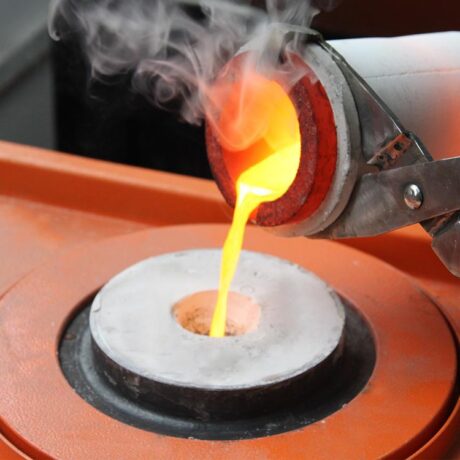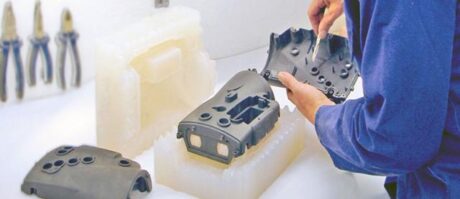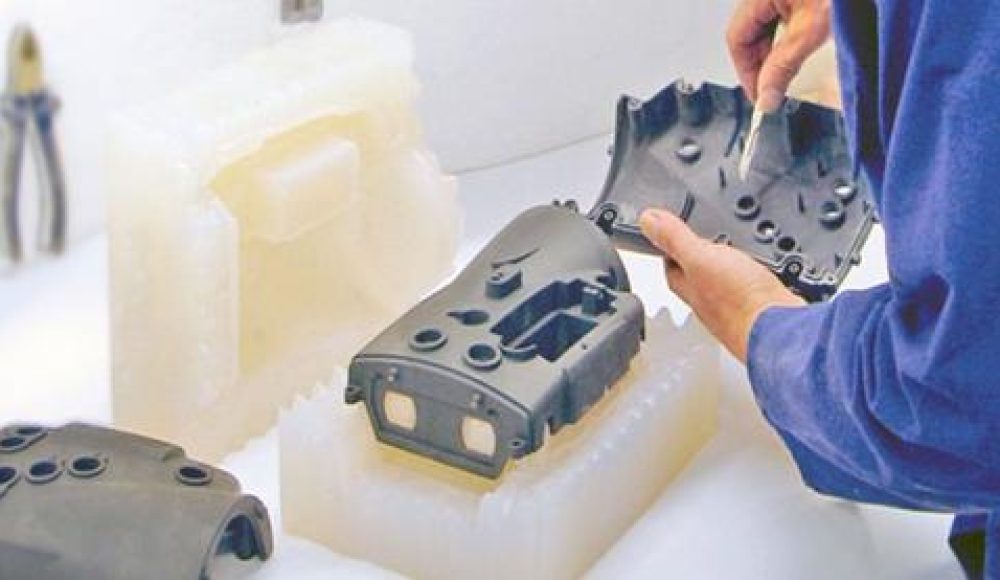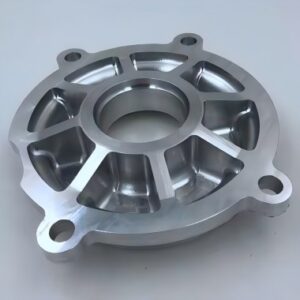Vacuum casting is an advanced casting process in which metals are melted, poured and crystallized in a vacuum environment. The following is a detailed introduction to vacuum casting:
First, the working principle
Smelting and pouring:
The metal raw materials are put into a melting furnace in a vacuum chamber and heated and melted in a vacuum environment.
After the metal is melted, the molten metal is poured into the pre-prepared mold under vacuum conditions through a specific pouring system.
Vacuum environment:
During the casting and solidification process, the space in which the mold and liquid metal are placed is maintained in a high vacuum.
The vacuum environment helps to reduce the gas content in the metal, prevent metal oxidation, and improve the quality and performance of the casting.

Second, the main characteristics
Reduce gas content:
The vacuum environment significantly reduces the content of gases (such as hydrogen, oxygen, etc.) in the liquid metal, reducing the defects such as pores and shrinkage holes in the casting.
It is suitable for the production of special alloy steel castings requiring high quality and high performance and titanium alloy castings which are easily oxidized.
Prevent metal oxidation:
In the vacuum state, the metal liquid is isolated from oxygen, avoiding oxidation reactions during pouring and solidification.
Helps to keep the chemical composition and mechanical properties of the metal stable.
Improve casting quality:
Vacuum casting can produce castings with clear outline, smooth surface and dense structure.
High mechanical properties of castings, suitable for the manufacture of complex thin-wall castings and precision castings.
Process flexibility:
Vacuum casting is suitable for a variety of casting processes, such as vacuum suction casting, vacuum low pressure casting, vacuum differential pressure casting.
Suitable process parameters and operating methods can be selected according to different casting requirements and alloy types.

Third, classification and application
Categories:
Vacuum suction casting: the casting gate (or riser pipe) is inserted into the metal liquid, and then the casting is vacuumed, so that the metal liquid rises and fills the mold under negative pressure, solidifying and forming.
Vacuum low pressure casting: in the process of pressure filling, the mold is vacuumed, and the pressure is maintained after filling so that the casting crystallizes and solidifies under constant pressure.
Vacuum differential pressure casting: the resistance holding furnace and the casting mold are all sealed, the compressed air with large pressure is passed into the sealing cover, and the metal liquid is raised to fill the mold hole through the pressure difference.
Applications:
Vacuum casting is widely used in automotive, aerospace, electronics, medical equipment and other fields.
Can produce all kinds of tubes, water tanks, air filter shells, radiator parts, lamp shades, chips, gears, movable hinges and other complex thin wall castings.
Fourth, advantages
Improve casting quality: the casting has dense structure, high mechanical properties and good surface finish.
Reduce defects: porosity, shrinkage and other defects are significantly reduced, improve the yield of castings.
Process flexibility: suitable for a variety of casting processes and alloy types, to meet the requirements of different castings.
Improve the working environment: vacuum casting equipment is simple and the working environment is good, which is conducive to mechanization and automatic production.

Fifth, precautions
Equipment requirements: Vacuum casting equipment needs to have good sealing and vacuum capacity to ensure that the mold and liquid metal are in a high vacuum state.
Process control: It is necessary to strictly control process parameters such as melting temperature, pouring speed and vacuum degree to obtain high-quality castings.
High cost: Due to complex equipment and high process requirements, the cost of vacuum casting is relatively high, and it is generally suitable for the production of high-quality castings.
Sixth, the basic process of vacuum casting
1. Preparation stage
Mold preparation:
Make molds according to casting drawings. For vacuum casting, since there is no need to remove the casting mold, a disappearing mold or a specific type of mold is often used.
Material preparation:
Prepare the required metal raw materials, such as aluminum, magnesium, titanium, stainless steel and high temperature and heat resistant alloys.
Equipment inspection:
Check the vacuum casting equipment to ensure that the vacuum pump, melting furnace, pouring system, etc. are in good working condition.

2. Melting stage
Metal melting:
The metal raw materials are placed in a melting furnace in a vacuum chamber and heated to a molten state under vacuum. The vacuum environment helps to reduce oxidation and inspirations during metal melting.
3. Pouring stage
Mold installation and sealing:
The mold is installed on the vacuum casting equipment and sealed to ensure the tightness of the vacuum chamber during the pouring process.
Vacuum pumping:
Start the vacuum pump and vacuum the vacuum chamber so that the air pressure in the vacuum chamber can be reduced to a predetermined value. The control of vacuum degree is very important for casting quality.
Pouring molten metal:
Under vacuum, molten metal is injected into the mold through the pouring system. Casting speed, casting temperature and other parameters should be adjusted according to casting requirements and alloy types.
4, solidification and cooling stage
Casting solidification:
The liquid metal is cooled and solidified in the mold to form the casting. The vacuum environment helps to reduce defects such as pores and shrinkage holes in castings.
Vacuum holding:
In the casting solidification process, it is necessary to keep the vacuum degree in the vacuum chamber unchanged until the casting is completely solidified.
5. Post-processing stage
Casting removal:
After the casting solidifies, open the vacuum chamber and remove the casting. For some types of vacuum casting (such as disappearing mold casting), the casting needs to be cleaned after removal.
Casting cleaning and testing:
Clean castings to remove surface impurities and burrs. Then the quality inspection is carried out to ensure that the casting meets the design requirements.
6, specific types of vacuum casting process (vacuum suction casting as an example)
Mold placement and sealing:
Place the investment shell in a sealed room to ensure a good seal.
Vacuum pumping and liquid metal suction:
Start the vacuum pump and vacuum the sealing chamber. Meanwhile, dip the runner into the liquid metal. Under negative pressure, the metal liquid rises along the gate (or riser) and fills the mold.
Casting solidification and liquid metal reflux:
The liquid metal solidifies in the mold. After the casting solidified, the vacuum state was lifted, and the liquid metal that had not yet solidified in the runner flowed back to the crucible.
Casting removal and post-treatment:
The mold shell is removed, sand cleaning is carried out, and the vacuum suction casting is obtained. Then the quality inspection and subsequent processing.



